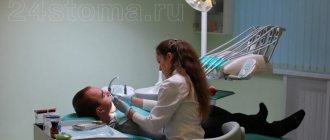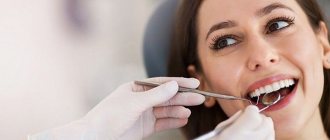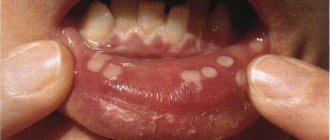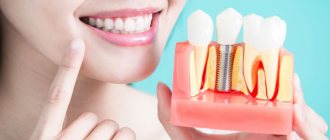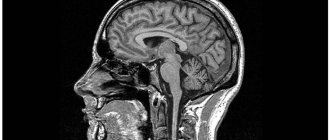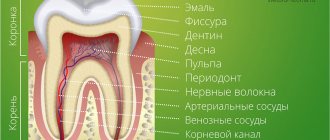In any book of folk recipes you can find medicinal remedies based on garlic. Even in ancient times, people knew about the bactericidal properties of this vegetable with a special spicy taste. And connoisseurs of good traditions still use it to treat all kinds of ailments. Those who understand the basics of grandmother’s “potions” assure: garlic will help with toothache much better and faster than pharmaceutical drugs: it will kill germs and alleviate suffering.
Having become acquainted with garlic recipes of traditional medicine, a person will discover an interesting fact: garlic is used for dental treatment in a variety of forms. It can be finely cut or rubbed for compresses. A piece of vegetable can be placed in a carious cavity. It can also be used to prepare an effective tincture for any type of home therapy: rinsing, rubbing, or ingesting. Even a clove of garlic applied to the wrist has miraculous powers, healers convince.
Myth 1. Dental treatment is painful.
A visit to the dentist is scary and painful.
Many people, especially the older generation, associate a visit to the dentist with the squeal of a drill working like a miner’s jackhammer and a panicky fear that it will be very painful.
This is wrong. Modern dentistry is equipped with the latest, almost silent, high-speed turbines, which allow you to very quickly remove areas of the tooth affected by caries. Also, if necessary, the dentist can anesthetize a sensitive tooth and continue further treatment comfortably and completely painlessly.
Garlic compress on the wrist - medicine or superstition?
When the ancestors put this vegetable on their wrists, what were they thinking? Those who have never dealt with traditional medicine see something superstitious in this method. In their opinion, only magic spells can be more absurd.
Garlic compress (popular name “Siberian recipe”) is made as follows:
A clove of garlic is thoroughly crushed until it turns into pulp. The mass is then placed on the area of the wrist where the pulse is felt. Secure the medicine with a strong, thick bandage. Some people don’t crush the garlic, but simply cut a clove in half and press the cut side to their wrist. Treatment nuance: if a tooth hurts on the right side, then a compress is applied to the left wrist, and vice versa.
It is interesting that to this day no one can explain what the effect of such a remedy is. Proponents of traditional medicine are trying to defend their positions, but their evidence base also branches into several different “guesses”:
- Different points of the human body are connected to nerve nodes, and if you apply garlic mass to the wrist point, you can somehow block the path of pain signals to the brain.
- When garlic irritates the sensitive skin of the opposite wrist, a strong burning sensation begins, which distracts the patient from the tooth and the side on which it is located.
- Garlic phytoncides penetrate through the skin into the circulatory system and dull the perception of pain by the entire body.
There are many followers of garlic compress on the wrist.
As can be seen from the evidence points, garlic on the wrist is a very versatile solution to the situation. By the way, this method has a lot of supporters, although it usually ends with the person simply receiving an additional source of pain to the existing one.
Myth 2. My teeth are healthy if they don’t hurt.
If your teeth do not bother you, then you do not need to visit the dentist.
Wrong. It is imperative to visit a dentist at least twice a year and here’s why: the onset of dental and oral disease occurs, as a rule, unnoticeably and painlessly, therefore only a professional dentist can determine the signs of the appearance of a particular dental disease in a patient; Dental treatment at an early stage of the disease is most effective and takes relatively little time; prevention and prevention of diseases of the teeth and oral cavity costs the patient much less than further complex and long-term treatment.
Myth 3. Garlic for toothache
Garlic and toothache.
In folk medicine, it is recommended to use garlic to relieve toothache. The inside of the wrist of the left hand is rubbed with garlic, and then a little more grated garlic is bandaged through the fabric to the pulse until the pain goes away. The doctor P. M. Kurenkov, who described this folk method, himself believed that the Molokan sectarians who used it “strongly believed in miracles and were cured by the power of their faith.” So treatment with garlic is most likely a myth, which, however, does not prevent you from trying this method on yourself, especially if you rarely visit the dentist.
How true are these facts? This needs to be sorted out
Garlic and a bad tooth – are they compatible?
If you take an ordinary clove of garlic and subject it to chemical analysis, then among the substances detected there will not be even a single mild analgesic. Therefore, you should not see a garlic clove as a pharmaceutical tablet against acute pain and expect an immediate miracle when applying it to a tooth.
Garlic contains a lot of medicinal components, including for toothache.
But there are about 400 (!) active medicinal components, among which the most useful for a diseased tooth are:
- Allicin
- Phytonutrients
- Phytoncides
These elements are the enemies of any pathogenic microflora, which is always present in the patient’s body. By using garlic for dental treatment, a person simultaneously ennobles all systems of the body and improves his immunity.
Allicin is especially needed in the fight against microbes, as it kills all kinds of viruses, bacteria, and fungi. Moreover, this component is not an “innate” free element in the plant. It appears when vegetable cells are subject to mechanical damage - vacuoles enter into a chemical reaction with the cytoplasm, resulting in the formation of allicin.
So why does garlic relieve pain? It is easy to guess that the bactericidal talent of this vegetable contributes to a sharp decrease in harmful microflora. As a result, the source of inflammation, which causes pain symptoms, for example, with inflammation of the gums, calms down.
Therefore, the answer to the question of whether garlic eliminates pain itself is: no. It only acts on certain root causes of this pain, helps to stop inflammatory processes and thereby alleviates the patient’s condition. But garlic can provoke acute pain if used incorrectly.
How people harm themselves
Allicin is a very active substance, which means it is aggressive. Prolonged contact with the component can easily cause a burn to the oral mucosa.
And if we talk about diseased teeth, then it is very dangerous to put pieces of vegetables into deep carious holes - after all, the pulp (dental nerve) is still alive and suffers even from mild irritants, such as a breath of cool wind or regular brushing of teeth. What happens if a destructive drop of allicin “touches” the inflamed pulp?
With deep caries, the cavity in the tooth can extend almost to the pulp chamber itself, in which a ball of blood vessels and nerves is located. A tooth with caries always hurts sharply - this indicates that the pulp has not yet died and reacts to any irritants. Therefore, the dentist always removes this tangle, which has caused the patient’s sleepless nights.
Dentists say that when garlic hits the nerve of a diseased tooth, a thrill is guaranteed.
The person himself forever remembers that unbearable feeling when a piece of sweet or salty food landed in a carious hole... But for some reason he thinks that a sharp piece of garlic will somehow have a different effect on the dental nerve, and shoves it into the cavity. In this case, thrills are guaranteed.
Sometimes toothache is a consequence of inflamed gums. In the resulting pocket in the gums, pieces of food accumulate and decompose. And people rush to apply a piece of garlic to the source of pain. They heroically endure the burning pain, believing that this is how “garlic works,” and meanwhile a burn forms on the gum. Its damage is not inferior to complications after inflammation, although the bacteria could have been killed in ways that were not so blasphemous to oneself. Among them is simple clean water with salt. It perfectly washes away food debris, pus and harmful microbes from the gum pocket and carious cavity. At the same time, such rinsing does not cause burns.
Attention! Sometimes patients are especially patient and steadfastly withstand the acute pain from a piece of garlic in a carious hole, and a day later the pain suddenly disappears... This is not a reason for joy at all. Just a dose of allicin killed the pulp, and the dead tissue of the nerves and blood vessels will soon begin to decompose in the tooth. If the resulting pus does not find a way out, everything can end very badly.
Folk remedies will never replace proper treatment at the dentist!
Myth 12. Teeth whitening with toothpaste
Teeth can be whitened with a special whitening toothpaste. Not true. Various whitening toothpastes, using abrasive additives, only remove food and nicotine staining from the surface of tooth enamel, lightening it, but not whitening it.
True teeth whitening can only be achieved by a professional dental procedure using high concentrations of hydrogen peroxide or carbamide peroxide. Modern professional office and home whitening systems allow you to whiten enamel not by one shade, as with mechanical lightening, but by two or three or more (on the Vita scale).
Beneficial features
Garlic owes its antiseptic effect to allicin in its composition. The substance is characterized by pronounced fungicidal and bactericidal properties.
Allicin in garlic is formed due to a mechanical effect on the structure of cells; it is not contained in the product in its free form.
The chemical composition of garlic is rich in sulfide components . Their action is detrimental to staphylococci and some types of fungi. Thanks to these elements, blood clots are well absorbed.
In addition to sulfides, the product contains more than 100 chemical compounds , including zinc, selenium, and germanium. Phytoncides with high biological activity are perfectly combined with the enzyme lysozyme, fatty oils, magnesium, iodine, calcium, and B vitamins.
The analgesic effect of garlic is due to a decrease in the number of pathogenic microorganisms that cause the inflammatory process.
When garlic and salt are combined, it is possible to reduce the flow of pus in the area of the affected tooth. This tactic is accompanied by a burning sensation. The reaction to an aggressive product stimulates blood circulation in the oral cavity, accelerating the delivery of immune cells.
Myth 13. There is no need to put teeth in
There is no need to restore missing teeth. This is a deep misconception. Missing teeth must be replenished and restored for the following reasons: in the place of the missing tooth, bone tissue is lost (so-called “pits” and “cavities” are formed - especially in the lower jaw); the alveolar ridge of the jaw bone becomes thinner, which significantly complicates further dental implantation; the load on the remaining teeth increases significantly, which leads to tooth wear and, as a consequence, underbite; the quality of chewing food sharply decreases, which leads to various diseases of the gastrointestinal tract; Without teeth, the face takes on senile features, sunken cheeks appear, mumbled speech appears, and the person visually looks much older than his peers.
Myth 14. Braces ruin your teeth.
It is harmful to install braces to correct your bite, as the teeth under them will deteriorate. Again, a wrong statement. Braces are small clasps that are attached to the teeth using a special orthodontic composite photopolymer material that contains fluoride and is absolutely harmless to tooth enamel.
Caries in patients who wear braces occurs in cases of extremely poor oral hygiene.
If a patient eats foods prohibited by the orthodontist, does not brush or does not brush his teeth and braces properly after eating, or ignores special orthodontic toothbrushes and rinses, then he automatically falls into the risk group for caries.
We must remember that while wearing braces, your teeth must be taken care of most carefully.
Garlic tincture or exposing healers
Among the folk remedies made from garlic for toothache, there is one simple recipe - garlic tincture.
The “potion” is very easy to prepare. Weigh out 100 grams of garlic, crush it or grate it, pour half a liter of vodka into the mass, then leave it to harden for 14 days. After which the healing liquid is decanted and rinsed in the mouth, or passed inside. As a rule, drinking garlic tincture is preferred primarily by connoisseurs of strong drinks, and not by real toothache sufferers. But tincture of garlic inside is a double load on the gastric mucosa: ethyl alcohol and allicin.
If the first option is more harmful than beneficial, will the second option, rinsing, help? Sometimes it really helps. Effective garlic phytoncides float in the tincture, which destroy harmful bacteria on the surface of the gums and somewhat relieve inflammation. Ethanol itself also has antiseptic properties and dilates blood vessels, which makes the pain subside a little.
Garlic tincture can help with gum disease
Thus, for ailments associated with gums, rinsing with garlic tincture can be effective. But ordinary sage/chamomile decoctions or oak bark tincture will have a similar effect. In addition, their “strength” does not need to wait 2 weeks. During this time, inflammation can already cross the boundaries of what is permissible and drive the patient to the hospital.
If toothaches are caused by deep caries, there is no point in waiting for the garlic miracle potion to infuse - it will simply be useless.
Myth 15. Brushing your teeth is harmful
Brushing your teeth is harmful because brushing wears away the enamel of your teeth.
A very “dense” misconception. It is necessary to brush your teeth to remove the constantly forming soft plaque from the tooth enamel. As is known, soft plaque contributes to the appearance of caries, and as a result of hardening of uncleaned soft plaque, tartar is formed.
Further. You need to brush your teeth correctly. Tooth enamel can wear away due to improper and overuse of highly abrasive toothpastes, especially those offered for at-home teeth whitening.
Myth 16. It’s cheaper to remove a tooth.
It is cheaper to remove a tooth than to treat it.
This is a misleading conclusion. It all depends on how seriously your tooth is damaged or damaged. If there are no direct indications for tooth extraction, then it must be preserved by carrying out the necessary treatment.
After all, having saved a small amount of money when removing a tooth, over time (as mentioned above) you will have to spend significantly on its restoration by making a bridge (in this case, two adjacent supporting teeth are processed), or by installing a dental implant with a single crown on it.
Options for restoring a lost tooth depend solely on your choice.
In any case, the main task of both the dentist and the patient is to preserve their natural teeth in the mouth as much as possible.

